Audi e-tron quattro preview: the carmaker’s most hi-tech interior ever
Electric SUV’s cabin features virtual side mirrors, an overhauled screen system and ‘3D sound’
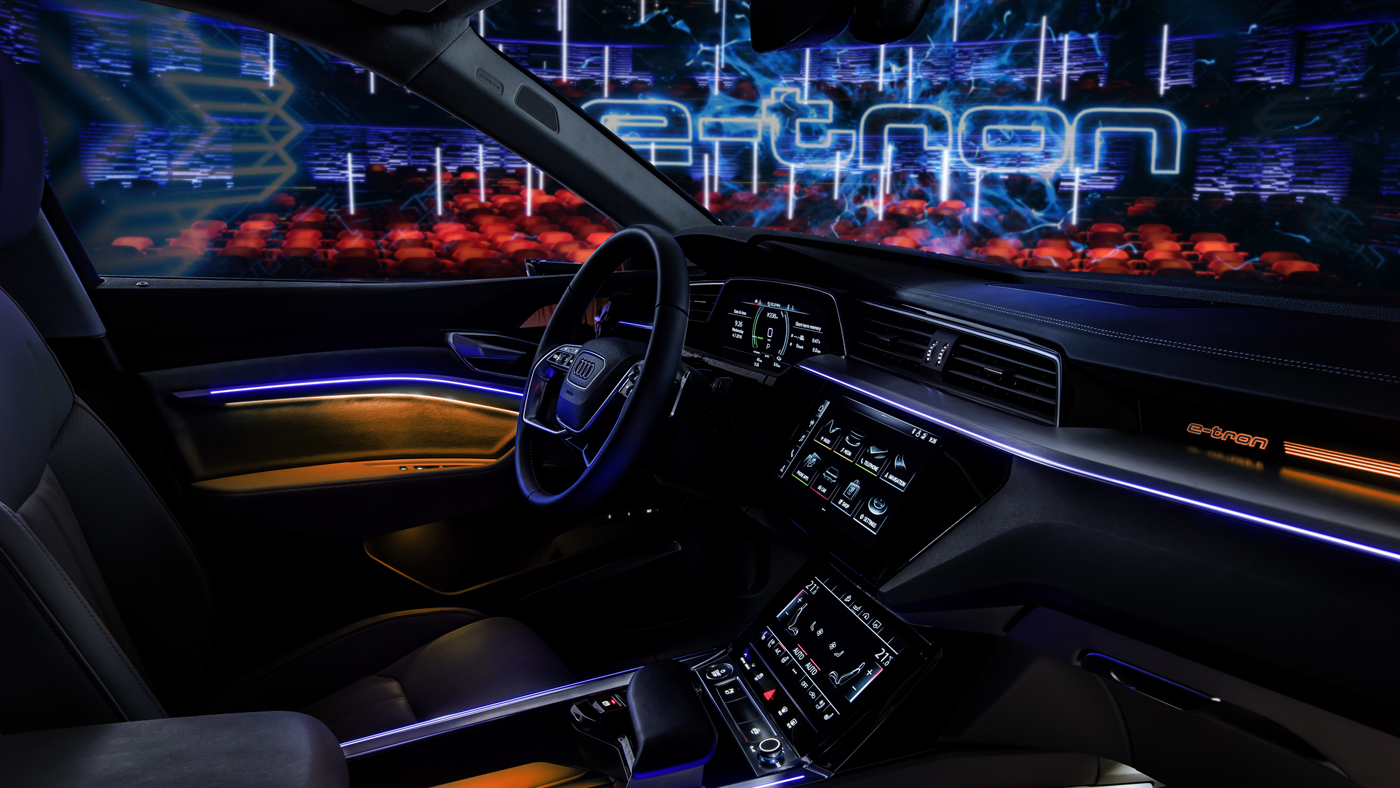
The hi-tech interior of the Audi e-tron quattro prototype was finally unveiled in all its glory last night, following months of speculation and snatched glimpses of the German carmaker’s first-ever electric vehicle.
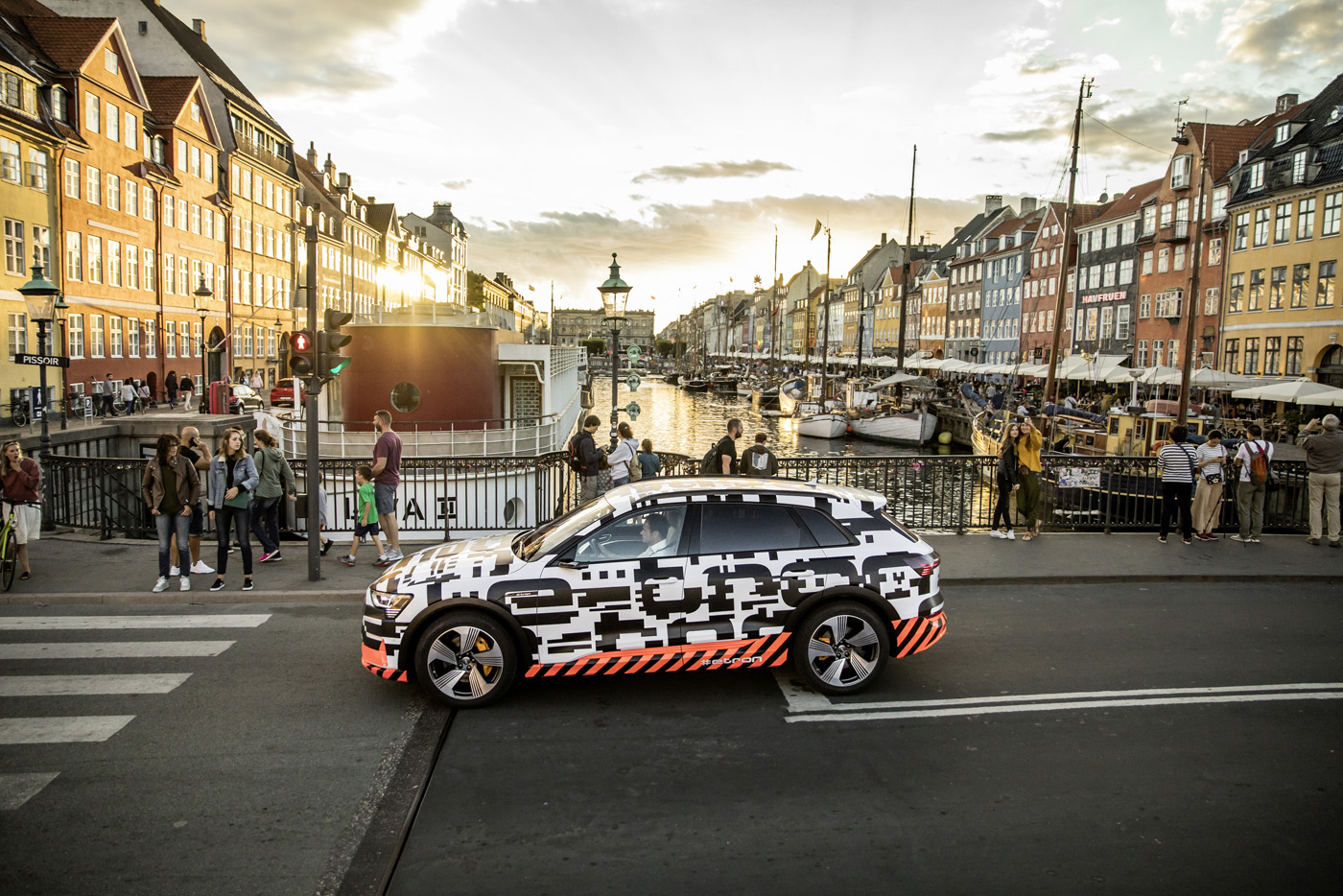
So what’s new about this state-of-the-art cabin? The Week Portfolio got a first-hand look during a drive around the sunny streets of Copenhagen.
Virtual side mirrors
The Week
Escape your echo chamber. Get the facts behind the news, plus analysis from multiple perspectives.

Sign up for The Week's Free Newsletters
From our morning news briefing to a weekly Good News Newsletter, get the best of The Week delivered directly to your inbox.
From our morning news briefing to a weekly Good News Newsletter, get the best of The Week delivered directly to your inbox.

One of the biggest technological advances on the muscular electric SUV is the introduction of virtual side mirrors. Gone are the standard glass mirrors that have graced most car doors for decades, replaced here with slim cantilevered cameras that sweep out from the body and back, sending a live video feed to two high-contrast 7in Oled displays inside the cabin.
As well as looking futuristic, the display offers two distinct advantages: first, they cut drag by an estimated 2% to 7% - a big benefit with electric vehicles, helping to maximise their range.
The mirrors also automatically adjust to the driving conditions, opening out to a wide-angle view when you are driving on a motorway and contracting to a tighter shot when you are manoeuvring through a parking lot.
Screens, screens and more screens
A free daily email with the biggest news stories of the day – and the best features from TheWeek.com
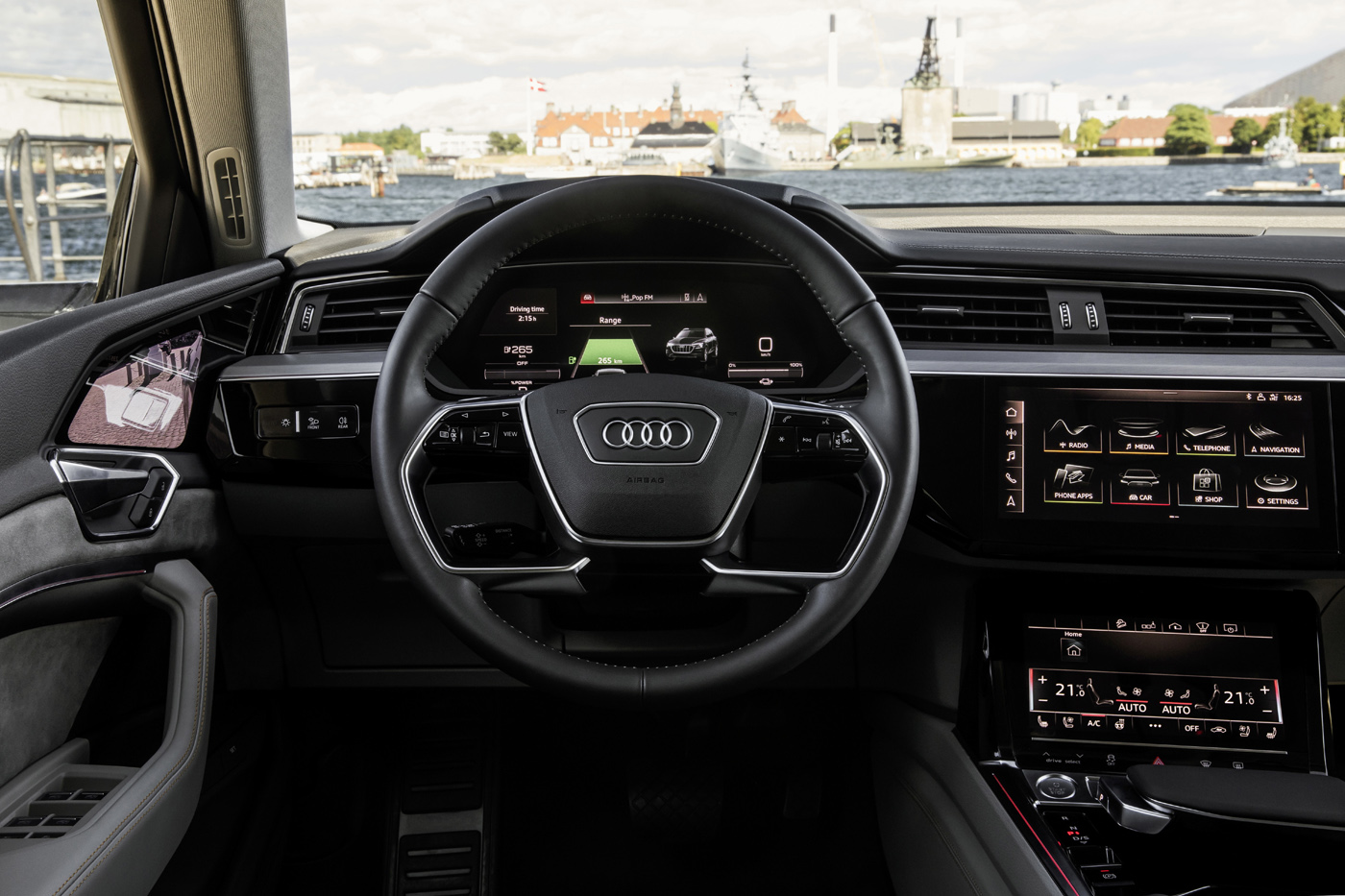
Screens are everywhere in the e-tron. As well as the familiar “virtual cockpit” from previous Audi models, with its full-colour cluster of reconfigurable digital instruments, there is now also a dual-screen multi media interface (MMI) infotainment system in the centre column.
The upper display houses the main controls, including those for navigation, radio, telephone and apps. Below, the secondary screen is for adjusting the car’s temperature, including air con, seat heating, and ventilation, with the option to set different temperatures for different vents.
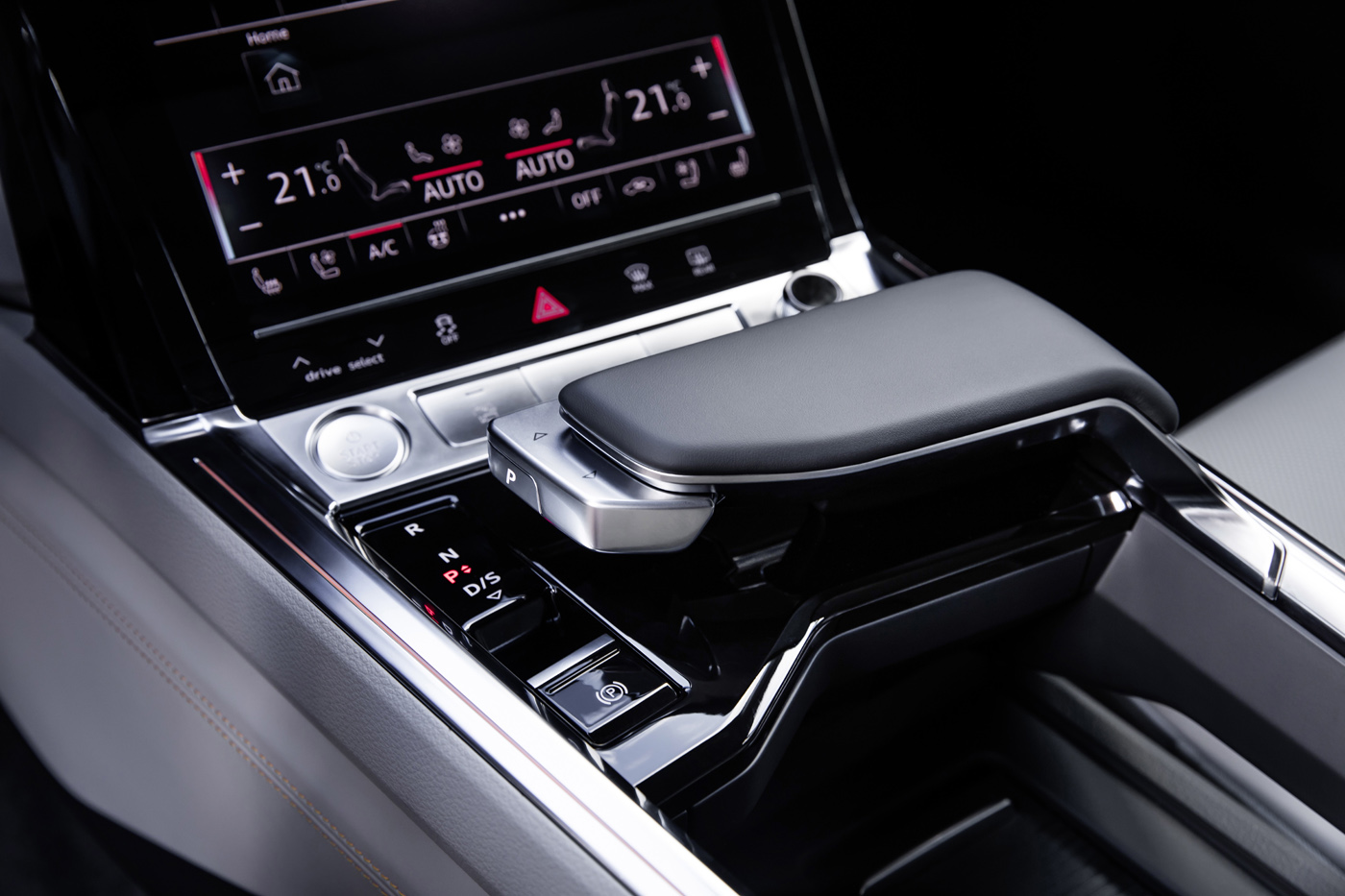
All the screens are touch-sensitive, of course, and offer a pleasing haptic response that gives the impression of pressing a physical button rather than swiping at a piece of glass. Cleverly, the system even gives out a sound when touched – the much celebrated “Audi click” – which has been tuned to the same note as all physical buttons across Audis everywhere.
Internal thoughts
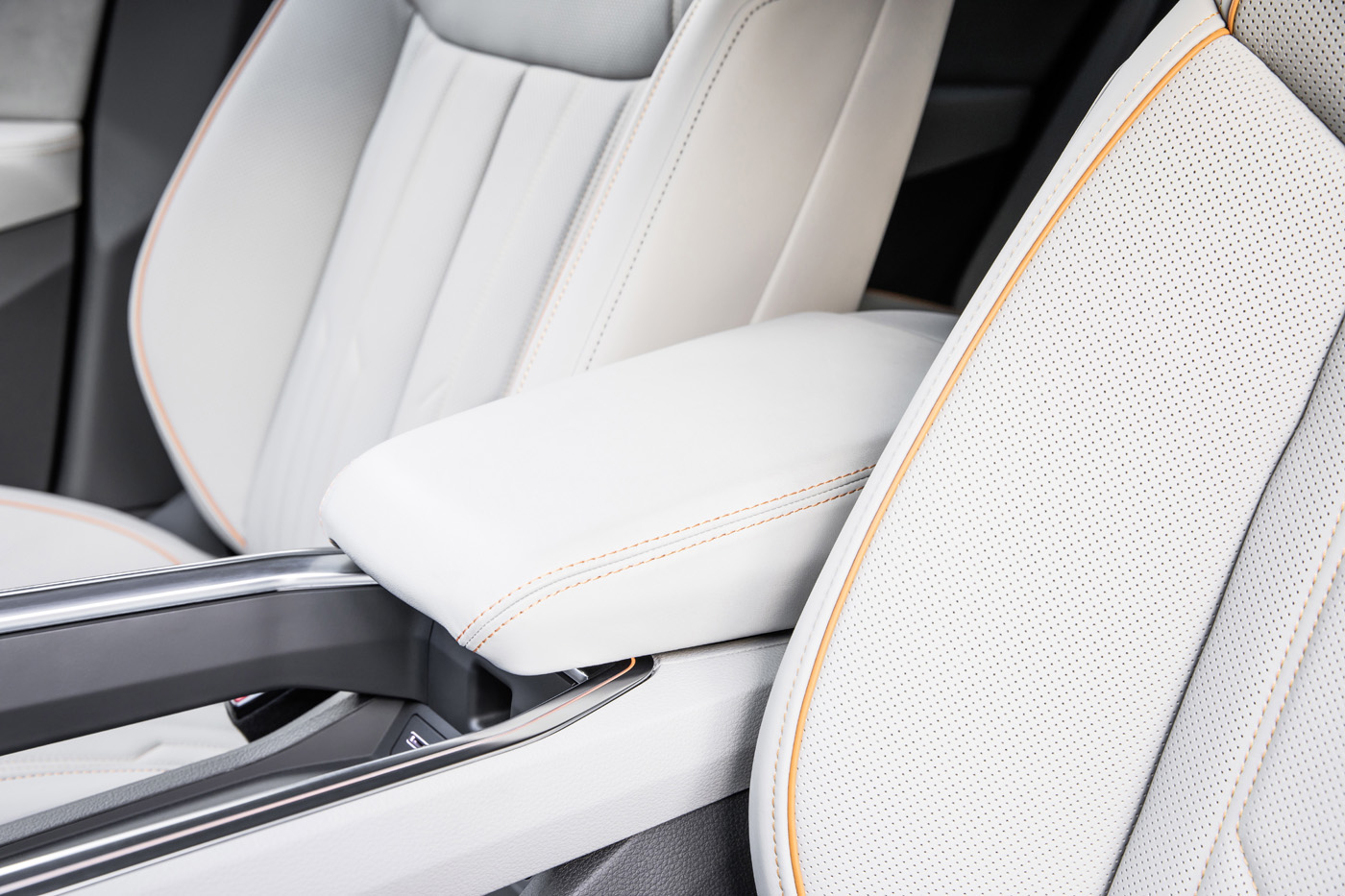
The interior of the Audi e-tron prototype offers a mix of materials, colours and inlays. The seats are made from Valcona leather, while the dash features dark brushed aluminum, enhancing the car’s sporty look.
Interestingly, Audi’s sensory experience team works to refine not only the look and feel of the materials used in each car’s cabin, but also the scent of every element. So how does the e-tron smell? In a word: expensive.
During the presentation of the cabin, I asked Audi interior designer Thomas Pinel whether the blue lighting around the cabin was intended to be a nod to 1982 sci-fi film Tron. “Not exactly,” he told me with a smile. “But I do take inspiration from classic sci-fi.” It shows. Even the stitching on the seats brings to mind circuit boards and, according to Pinel, the orange piping takes its cue from the car’s high-voltage electrical system.
Space, the final frontier
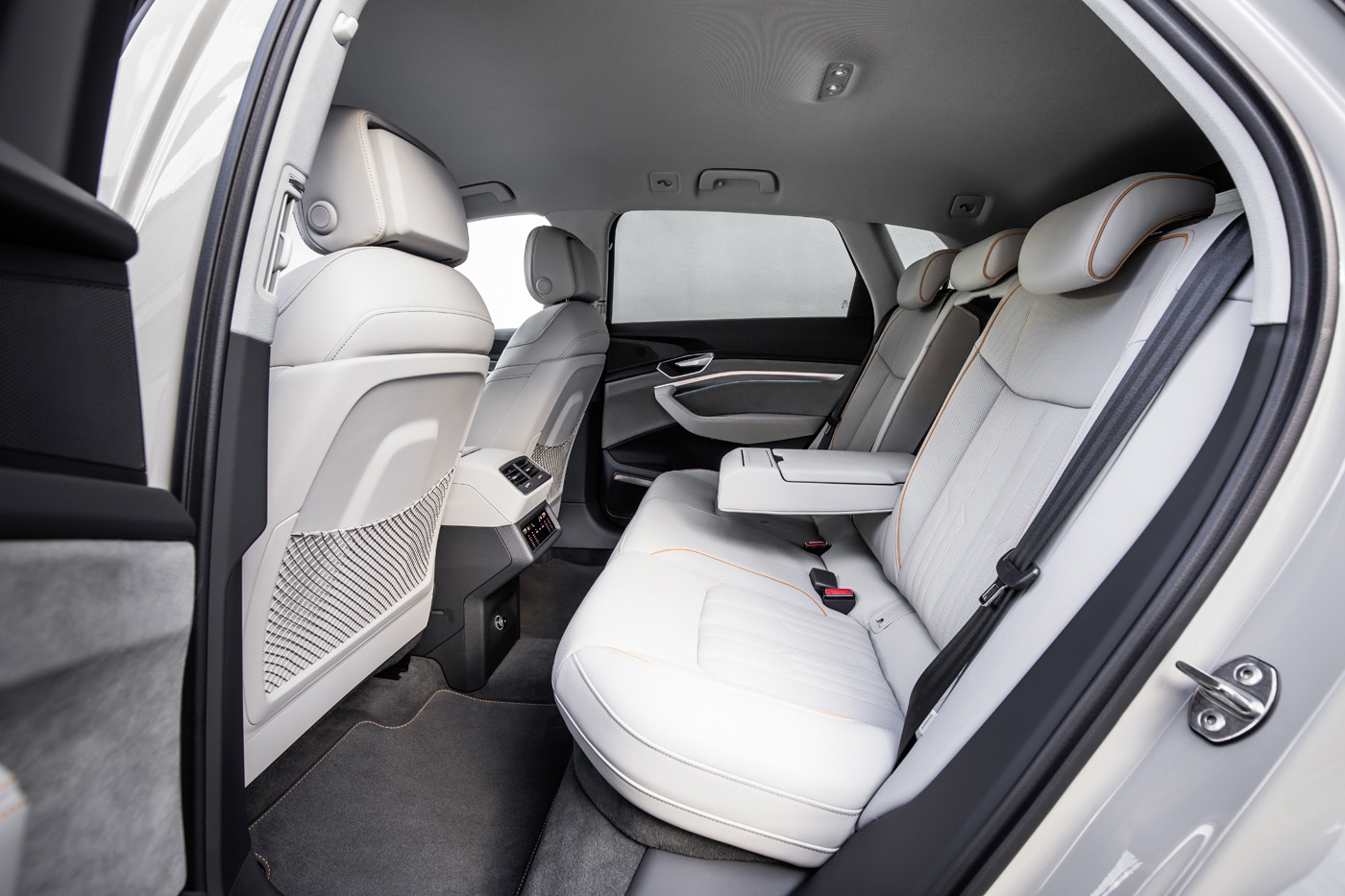
The e-tron’s interior can comfortably seat five passengers. The car has a long wheelbase of 9.6ft, which means plenty of legroom for all and good headroom throughout the cabin (useful for anyone who, like me, is above 6ft).
An interesting feature is the “flat plateau” in the back of the car – the reclaimed floor space between passengers’ feet where the driveshaft would be found in conventional cars. It may not add a lot of extra cabin space but it makes a difference.
The sound of silence
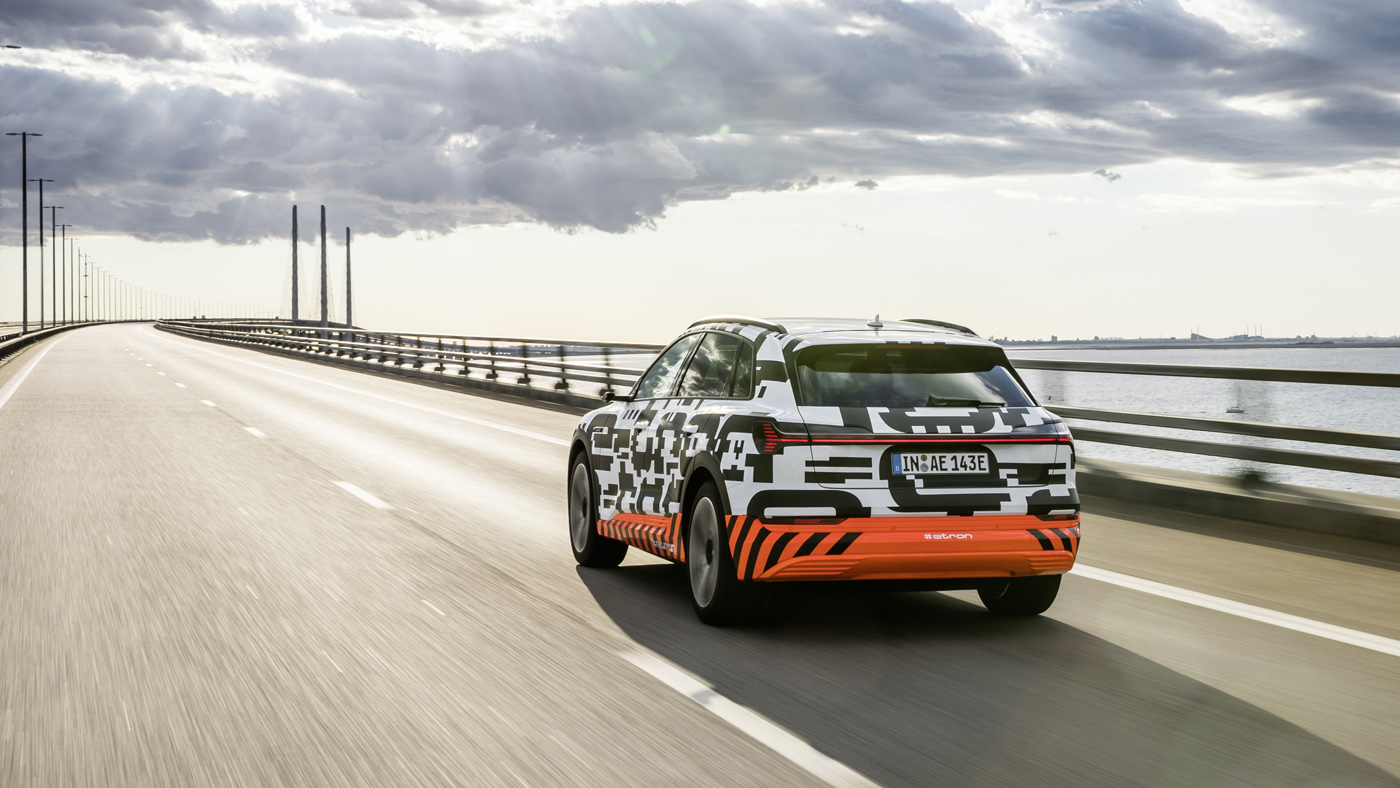
One of the most noticeable things about driving in the e-tron is the quiet. The only sounds you hear most of the time are from the car’s tires and the hum of its electric motors.
There is the muted whoosh of cars around you, but the e-tron’s body has been soundproofed and sealed throughout to further isolate the cabin from external sound.
Audi says that wind noises tends to become noticeable in most cars above speeds of around 85km/h (52.8mph), but it barely gets into the e-tron, allowing passengers to talk to each other without needing to raise their voices.
Go out with a Bang (& Olufsen)
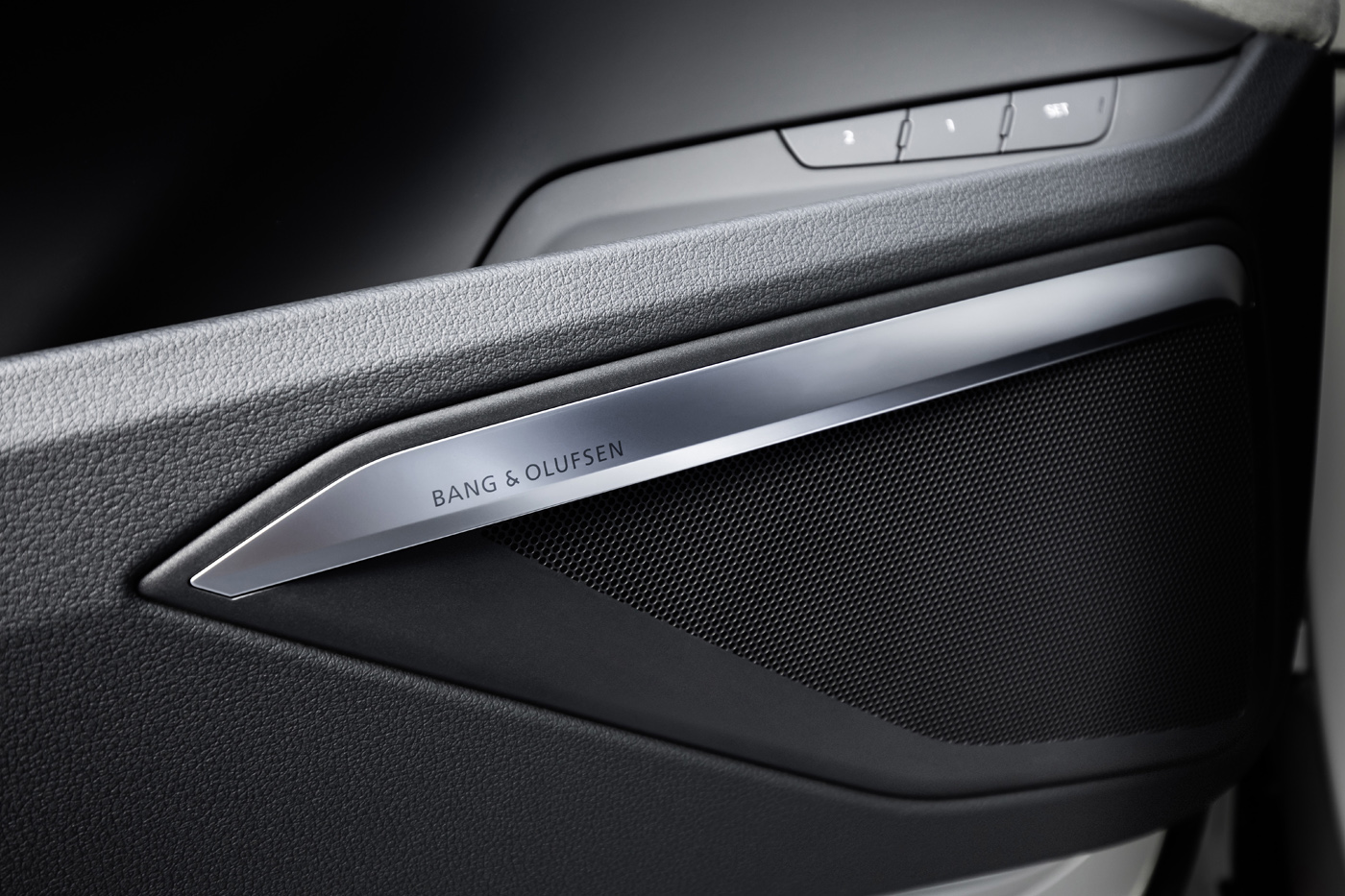
The calm of the cabin is only interrupted when you fire up the e-tron’s Bang & Olufsen sound system. The car is equipped with 16 speakers and is rated for 705 watts of power.
One of the most striking features of this sound system is its so-called 3D sound, which, when switched on, emulates the experience of being in the very space where the recording took place, be it a studio, concert hall or stadium.
Audi already offers the Bang & Olufsen 3D system as an option in most of its other models, but it feels new to hear it against the backdrop of the e-tron’s hushed electric engine.
Conclusion
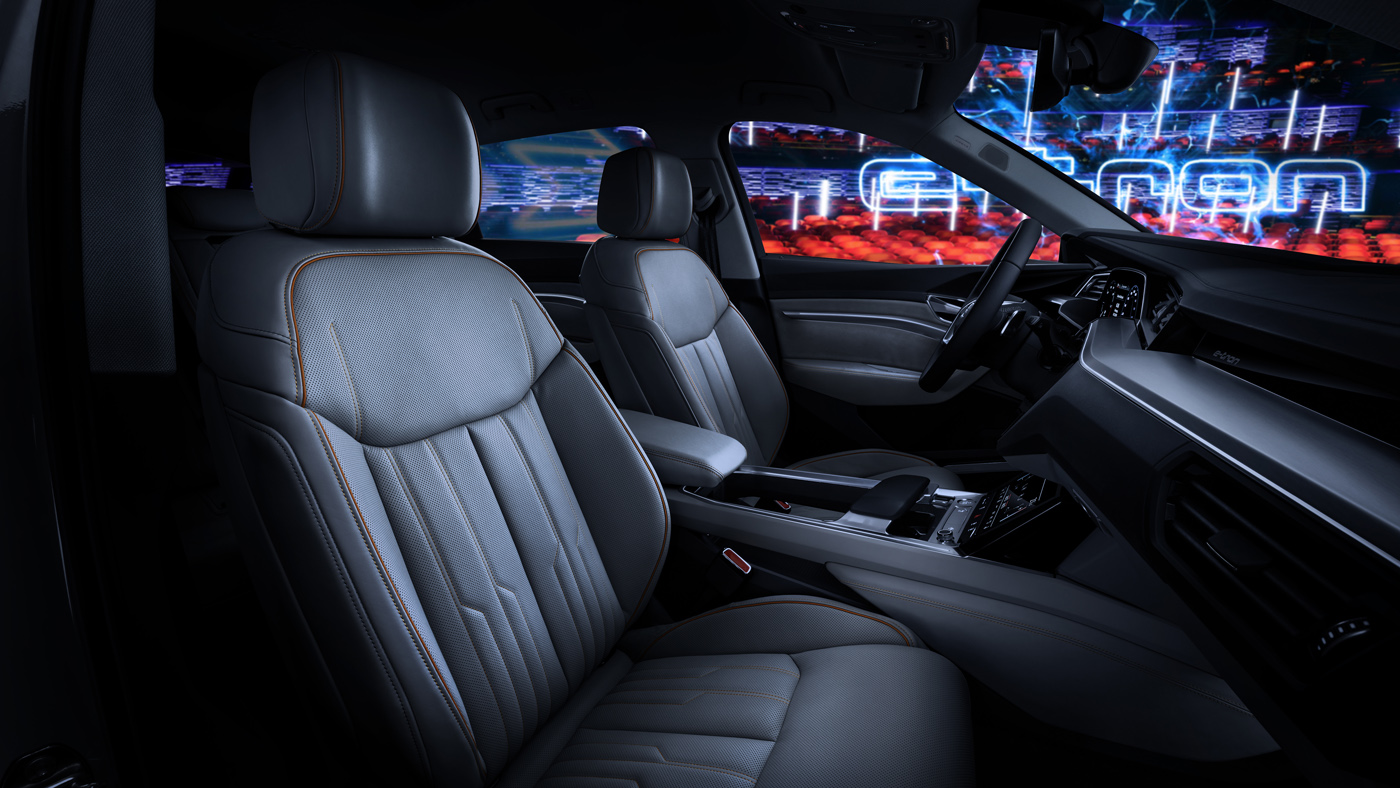
Rather than crowing about it, the e-tron’s interior conceals most of its state-of-the-art technology. It still feels like an Audi, just one that does a host of things in an intuitive new way. The most obvious innovation is the virtual wing mirrors, but like any good piece of tech, even just a few minutes of use leaves you wondering how you ever did without them.
An official release date and pricing for the e-tron has yet to be announced, but What Car? expects the EV to cost in the region of £60,000. This would put it in direct competition with the upcoming Jaguar I-Pace and Tesla’s Model X SUV.
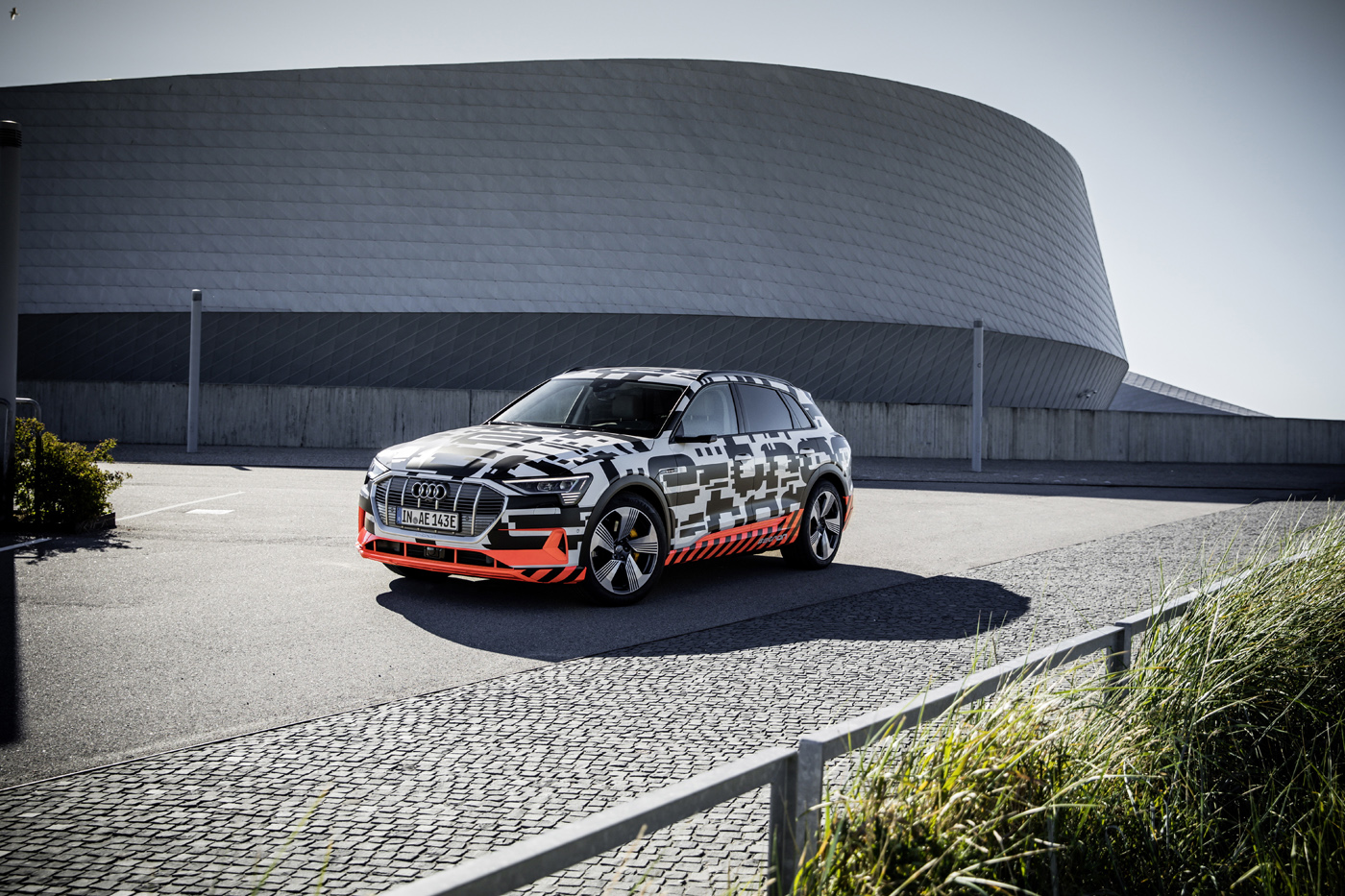
Arion McNicoll is a freelance writer at The Week Digital and was previously the UK website’s editor. He has also held senior editorial roles at CNN, The Times and The Sunday Times. Along with his writing work, he co-hosts “Today in History with The Retrospectors”, Rethink Audio’s flagship daily podcast, and is a regular panellist (and occasional stand-in host) on “The Week Unwrapped”. He is also a judge for The Publisher Podcast Awards.
-
 Political cartoons for December 14
Political cartoons for December 14Cartoons Sunday's political cartoons include a new White House flag, Venezuela negotiations, and more
-
 Heavenly spectacle in the wilds of Canada
Heavenly spectacle in the wilds of CanadaThe Week Recommends ‘Mind-bending’ outpost for spotting animals – and the northern lights
-
 Facial recognition: a revolution in policing
Facial recognition: a revolution in policingTalking Point All 43 police forces in England and Wales are set to be granted access, with those against calling for increasing safeguards on the technology
-
 Friendship: 'bromance' comedy starring Paul Rudd and Tim Robinson
Friendship: 'bromance' comedy starring Paul Rudd and Tim RobinsonThe Week Recommends 'Lampooning and embracing' middle-aged male loneliness, this film is 'enjoyable and funny'
-
 The Count of Monte Cristo review: 'indecently spectacular' adaptation
The Count of Monte Cristo review: 'indecently spectacular' adaptationThe Week Recommends Dumas's classic 19th-century novel is once again given new life in this 'fast-moving' film
-
 Death of England: Closing Time review – 'bold, brash reflection on racism'
Death of England: Closing Time review – 'bold, brash reflection on racism'The Week Recommends The final part of this trilogy deftly explores rising political tensions across the country
-
 Sing Sing review: prison drama bursts with 'charm, energy and optimism'
Sing Sing review: prison drama bursts with 'charm, energy and optimism'The Week Recommends Colman Domingo plays a real-life prisoner in a performance likely to be an Oscars shoo-in
-
 Kaos review: comic retelling of Greek mythology starring Jeff Goldblum
Kaos review: comic retelling of Greek mythology starring Jeff GoldblumThe Week Recommends The new series captures audiences as it 'never takes itself too seriously'
-
 Blink Twice review: a 'stylish and savage' black comedy thriller
Blink Twice review: a 'stylish and savage' black comedy thrillerThe Week Recommends Channing Tatum and Naomi Ackie stun in this film on the hedonistic rich directed by Zoë Kravitz
-
 Shifters review: 'beautiful' new romantic comedy offers 'bittersweet tenderness'
Shifters review: 'beautiful' new romantic comedy offers 'bittersweet tenderness'The Week Recommends The 'inventive, emotionally astute writing' leaves audiences gripped throughout
-
 How to do F1: British Grand Prix 2025
How to do F1: British Grand Prix 2025The Week Recommends One of the biggest events of the motorsports calendar is back and better than ever